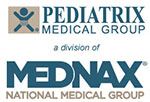Special Interest Group Update
Welcome to the newest NANN E-News section. In each issue, one of NANN’s special interest groups will share information in their area of focus.
The Group Precepting Model
Leslie Sulpar, MSN RN, Education SIG
Neonatal intensive care units (NICUs) have been experiencing high census and acuity. Paired with high attrition rates, there is an increasing demand to hire a large number of new graduate nurses, which requires creative scheduling routines. Many hospitals employ float pools, in-house agencies, and travelers. These per diem NICU nurses often receive less-acute patients, while the more experienced nurses are assigned to sicker patients. However, with the current preceptor model, it is likely a new nurse and their preceptor may be assigned a complex patient during the first weeks of orientation. This becomes especially problematic when hiring up to eight new nurses at a time.
The current preceptor model for new nurses typically involves 16 weeks of training, with 2 1/2 weeks of NICU-specific didactic instruction by department clinicians. In an effort to prevent preceptor burnout and to give new hires a solid footing, a “group precepting” trial was instituted by Julie Woodworth, professor of nursing at Medina Memorial Hospital in Medina, NY. Unit educators worked with groups of four students at a time for 8 weeks (approximately 60 hours). The theory was that the educators—who were not included in daily staffing numbers—could take any patient they wanted and any number of patients of any acuity.
Some of the tasks covered during transitional shifts included reviewing key policies and procedures, wayfinding, documentation, thermoregulation, feeding methods, cardiorespiatory monitors, assessment, medication administration, and care routines for stable babies. The goal was to promote success and job satisfaction among new hires by providing them with the support they need from the start. According to Dr. Woodworth in her 2012 study “A Group Orientation Model for New Graduate Nurses,” positive orientation programs lead to higher satisfaction among new nurses and subsequently reduce turnover rates.
Trainees from the group orientation model “exceeded performance expectations compared to typical new graduates” (Woodworth, 2012). The response from the new hire group was overwhelmingly favorable, as seen in their feedback below:
- “Orientation is a difficult and exciting process. The group precepting prepared me to transition to the NICU feeling supported and informed (about) providing exceptional care for the hospital’s littlest patients.”
- “Having the (preceptor) group to discuss and learn with not only fostered good communication between the new staff, but it (also) made me feel as though we had a unique support system. It established a good relationship with our educators from day one and empowered us with the appropriate level of confidence and caution.”
- “Working with the educators before working with my preceptor helped to ease my anxiety about all the newness of transferring to a new unit.”
Responses from the preceptor group also were positive, but showed some areas for growth:
- “I strongly believe that transitional shifts do help in making new hires more comfortable and confident. I found my new hire was able to step away from just focusing on completing tasks to using critical thinking skills, assisting other RNs in the hallway, and responding to other alarms much earlier in the orientation process.”
- “It was great that (my trainee) already had a grasp of baseline assessment of the newborn. (It) also helped with introducing them to documentation in EPIC. It was nice when it came to line change and she had already been oriented on how to prime IV tubing.”
- “I am all for the ‘transitional shifts.’ I think that it helps break the ice for the (trainees).”
Nurse educators typically continue teaching in ways they are comfortable with despite the array of new technology available to them (Brown, Kirkpatrick, Greer, Matthias, & Swanson, 2009). However, it is essential to conduct more research on innovative ways to mentor incoming nurses, especially because millennials are more than two times more likely than their baby boomer or gen X counterparts to become nurses (Auerbach, Buerhaus, Staiger, & Douglas, 2017). The demand for these young nurses will continue to increase as baby boomers age out of practice. Therefore, nurse educators must investigate methods for training a younger, more diverse, and more tech savvy nurse population with a high propensity for switching jobs in search of a flexible work schedule and positive work-life balance (Auerbach, Buerhaus, Staiger, & Douglas, 2017).
The group percepting trial shows that it is essential to utilize evidence-based teaching strategies in conjunction with trending evidence-based bedside care practices (Pilcher, 2013). For successful execution, this teaching strategy demands time, commitment, and energy from the educators. Expectedly, this might be a challenge for nurse educators who have little time to master new teaching strategies. The group precepting trial exhibited this challenge through the feedback it received from participants, which emphasized a need for improved communication when a trainee is assigned to their preceptor. Despite this, the bonds that new hires formed with each other and the sense of security they achieved proves the effectiveness of the group precepting model. More evaluation and time is required to determine if this practice supports job satisfaction and retention.
References
Auerbach, D. I., Buerhaus, P. I., Staiger, & Douglas, O. (2017). Millennials almost twice as Likely to be registered nurses as baby boomers were. Health Affairs, 36(10) 1804–1807.
Brown, S. T., Kirkpatrick M. D., Greer A., Matthias A. D., & Swanson M.S. (2009). The use of innovative pedagogies in nursing education: An international perspective. Nursing Education & Research, 30(3) 153–158.
Pilcher, J. (2013). NICU nurse educators: What evidence supports your teaching strategies? Neonatal Network, 32(4) 281–284.
Woodworth, J. (2012). A group orientation model for new graduate nurses. Journal for Nurses in Staff Development, 28(5) 219–221.


